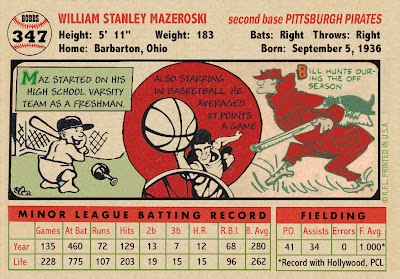Uncommon commons: In more than 30 years in
sportscards publishing I have thrown hundreds of notes into files about the
players – usually non-star players – who made up the majority of the baseball
and football cards I collected as a kid. Today, I keep adding to those files as
I peruse microfilms of The Sporting News from the 1880s through the
1960s. I found these tidbits brought some life to the player pictures on those
cards. I figure that if I enjoyed them, you might too.
The 9,098 fans who paid to see the Brooklyn Dodgers and
Boston Braves in an exhibition game at Chattanooga
on April 6, 1952, as the teams made their way North from spring training were
treated to a no-hitter.
Most of the fans, however, had been hoping for more
offensive fireworks. According to Boston
baseball writer Ross McGowen, reporting in the April 16 Sporting News,
more than 50% of the crowd on hand were “colored,” and they were there to see
Jackie Robinson put on a show.
The game was historic in that it was the first time that black
and white ballplayers had played with and against each other at Engel Stadium,
home of the Southern Association Chattanooga Lookouts.
But the best Jackie Robinson could do in breaking yet
another color line in baseball was to produce two long fouls off Braves’ lefty
Warren Spahn in his first at-bat. McGowen reported, “Jackie drew more cheers
for two fouls than anybody save Willard Marshall, who hit the game-winning
homer in the ninth inning.” Marshall’s
blow, with two out in the top of the ninth, gave the Braves a 1-0 win.
Robinson didn’t hit a ball out of the infield and struck out
once in his three at-bats. Roy Campanella gave the partisan fans a little more
to cheer about when he drew the only walk off of Spahn and stole second base.
Boston’s
black centerfielder Sam Jethroe, “drew a mild hand,” according to McGowen, when
he got a hit off Dodgers’ pitcher Preacher Roe. The only other black player to
appear for Boston
was future Milwaukee Braves star Billy Bruton, who pinch-ran for Sid Gordon in
the ninth.
Spahn pitched seven innings of hitless and near-perfect
ball, then was relieved by Ernie Johnson, who completed the no-hitter.
 |
White Sox teammates Minnie Minoso (left) and Hector Rodriguez, shown
here on their 1953 Bowman cards, integrated professional baseball in
New Orleans during spring training in 1952. |
A day after the Dodgers and Braves integrated the ballyard
at Chattanooga, the color line was similarly
broken at Pelican Park in New
Orleans with a Monday night exhibition game between
the White Sox and Pirates. Originally scheduled for Sunday afternoon, the game
had to be postponed due to the effects of a hurricane that had skirted New Orleans.
Writing in the New
Orleans Item, Hap Glaudi wrote, “(Minnie) Minoso and (Hector) Rodriguez
were the first members of their race to play baseball with white men in the
history of the sport in New Orleans.
“A throng of 9,502 paid to see this new era in baseball.” Of
that gate, Glaudi said, “A total of 2,882 Negroes saw the game from their
section of the stands.”
The black Cubans who integrated baseball in New Orleans that night each had a double in
the game.
Glaudi continued, “It was a sports event which contributed
far more for the betterment of race relations in this area than do
organizations dedicated to the same purpose.
“It will assist tremendously in erasing the impression which
some organizations give our people that there is something wrong with the way
god distributes his color,” Glaudi concluded.
More on this topic tomorrow.



































